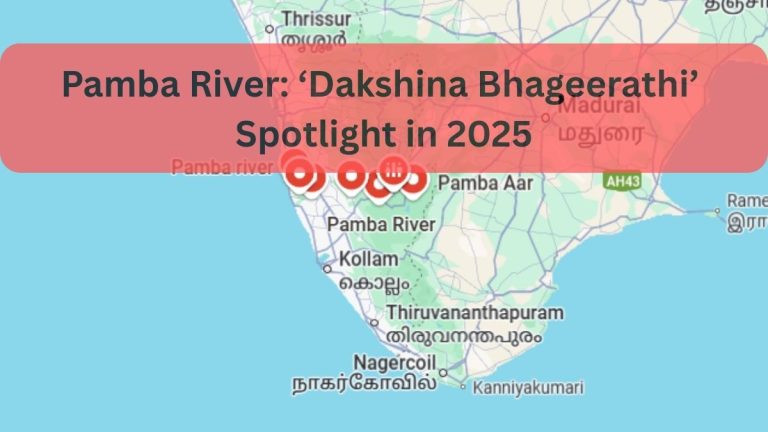In remote sensing, the quality of satellite images depends on different types of resolution: spatial, spectral, radiometric, and temporal. While spatial resolution tells us how detailed an image is, and spectral resolution helps differentiate objects based on color, temporal resolution is all about time—how often a satellite captures images of the same location.
Imagine you are monitoring the growth of a plant in your backyard. If you take a photo once a month, you will see major changes between images. But if you take a photo every day, you can observe smaller, more gradual changes. Similarly, satellites with higher temporal resolution capture more frequent images, helping us track gradual and sudden changes on Earth.
What is Temporal Resolution?
Temporal resolution refers to how often a satellite takes images of the same location over a period of time. This is determined by the revisit period, which is the time it takes for a satellite to complete one full orbit and return to a location. Most satellites revisit the same place every few days, but some high-resolution satellites can revisit the same location multiple times a day.
For example, if you want to track traffic congestion in a city, a satellite with a daily revisit time can provide useful data. However, if the satellite only captures an image once every two weeks, it will miss daily traffic patterns and short-term changes like road repairs or accidents.

Factors Affecting Temporal Resolution
The frequency at which a satellite captures images depends on several factors:
- Satellite and Sensor Capabilities – Some satellites, such as those used for weather monitoring, can capture images every few hours. Others, like those for land-use mapping, may only revisit a location every few days. Example: Weather satellites like GOES take images of clouds and storms every 10–15 minutes to help meteorologists predict weather changes.
- Swath Overlap – The way satellites scan the Earth affects their revisit period. If the imaging areas (swaths) overlap, some locations can be captured more frequently. Example: If you and your friend both take photos of the same street from different angles, you get more frequent updates about what is happening in that area.
- Latitude – Locations near the poles, like Alaska or Antarctica, are imaged more frequently than areas near the equator because satellite orbits overlap more at higher latitudes. Example: If a school bus passes through a narrow street multiple times a day, students living along that street will see it more often than those on a different route.
Importance of Temporal Resolution in Remote Sensing
Frequent satellite images help us study changes on Earth over time. This is useful in many real-life applications:
1. Environmental Monitoring
- Vegetation Growth – Just like you observe how a tree in your schoolyard changes from season to season, satellites monitor forests, crops, and grasslands. Farmers use remote sensing data to check the health of their crops and decide when to water or fertilize them.
- Forest Health – If a tree in your neighborhood suddenly turns yellow, you might wonder if it’s sick or if the season is changing. Similarly, satellites help scientists track diseases affecting forests over weeks, months, or years.
2. Disaster Management
- Floods and Oil Spills – If a flood occurs, rescuers need updated maps to see which areas are affected. Satellites with high temporal resolution provide images every few hours to help with disaster response.
- Wildfires – Imagine hearing about a forest fire on the news. Satellites track how fast it spreads and where firefighters should focus their efforts.
3. Urban and Land Use Changes
- Deforestation – If you walk past an empty plot of land every day and suddenly notice trees being cut down, you can track the change yourself. Satellites do the same thing on a larger scale, helping to monitor illegal logging and forest loss.
- Urban Expansion – Cities grow over time, with new buildings, roads, and bridges. By comparing satellite images from different months or years, we can see how cities expand and plan infrastructure accordingly.
4. Weather and Climate Studies
- Cloud Cover Monitoring – Some areas, like tropical rainforests, are always covered by clouds. Satellites that take images frequently help scientists find clear views of the land between cloudy periods.
- Glacier and Ice Cap Changes – In colder regions, glaciers slowly melt due to climate change. Satellites with high temporal resolution capture small changes over time, helping scientists understand global warming.
5. Multi-Temporal Analysis for Research
- Tracking Seasonal Changes in Crops – Different crops have different growth cycles. For example, wheat and maize might look similar at first, but over time, their colors and textures change. By comparing images over several weeks, satellites can distinguish between crop types and help farmers plan their harvest.
- Observing Coastal Erosion – Beaches and coastlines change due to waves, storms, and human activity. Frequent satellite images help track how fast a coastline is eroding and predict future changes.
Conclusion
Temporal resolution is a key factor in remote sensing, allowing us to monitor the Earth’s surface over time. From tracking forest health to responding to natural disasters, the ability to capture frequent satellite images helps scientists, researchers, and decision-makers make informed choices.
In everyday life, we use the concept of temporal resolution without even realizing it—whether it’s checking the weather forecast multiple times a day, monitoring traffic updates, or capturing time-lapse videos of a growing plant. Similarly, in remote sensing, capturing images at different times helps us understand and respond to changes happening on our planet.





























